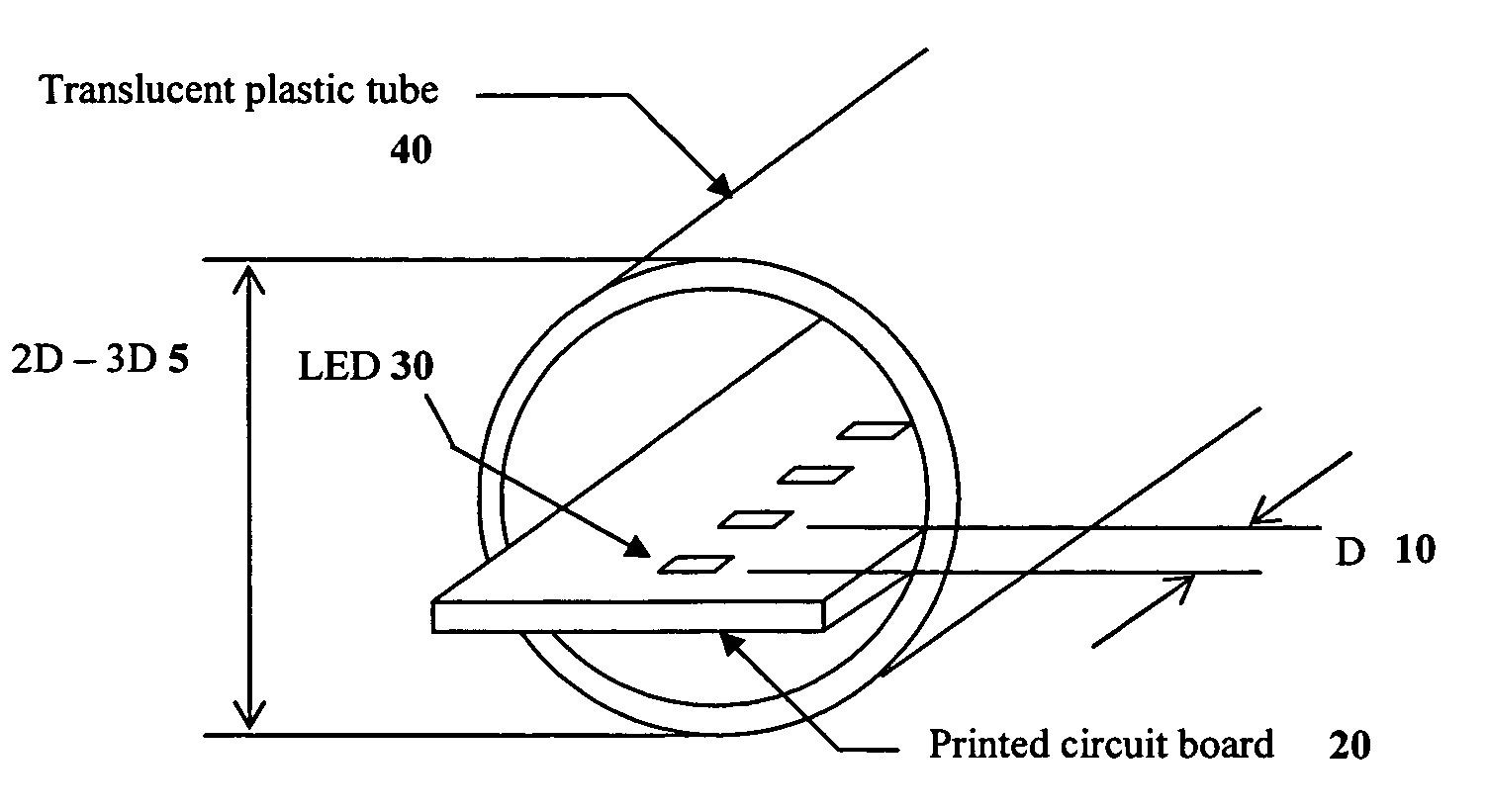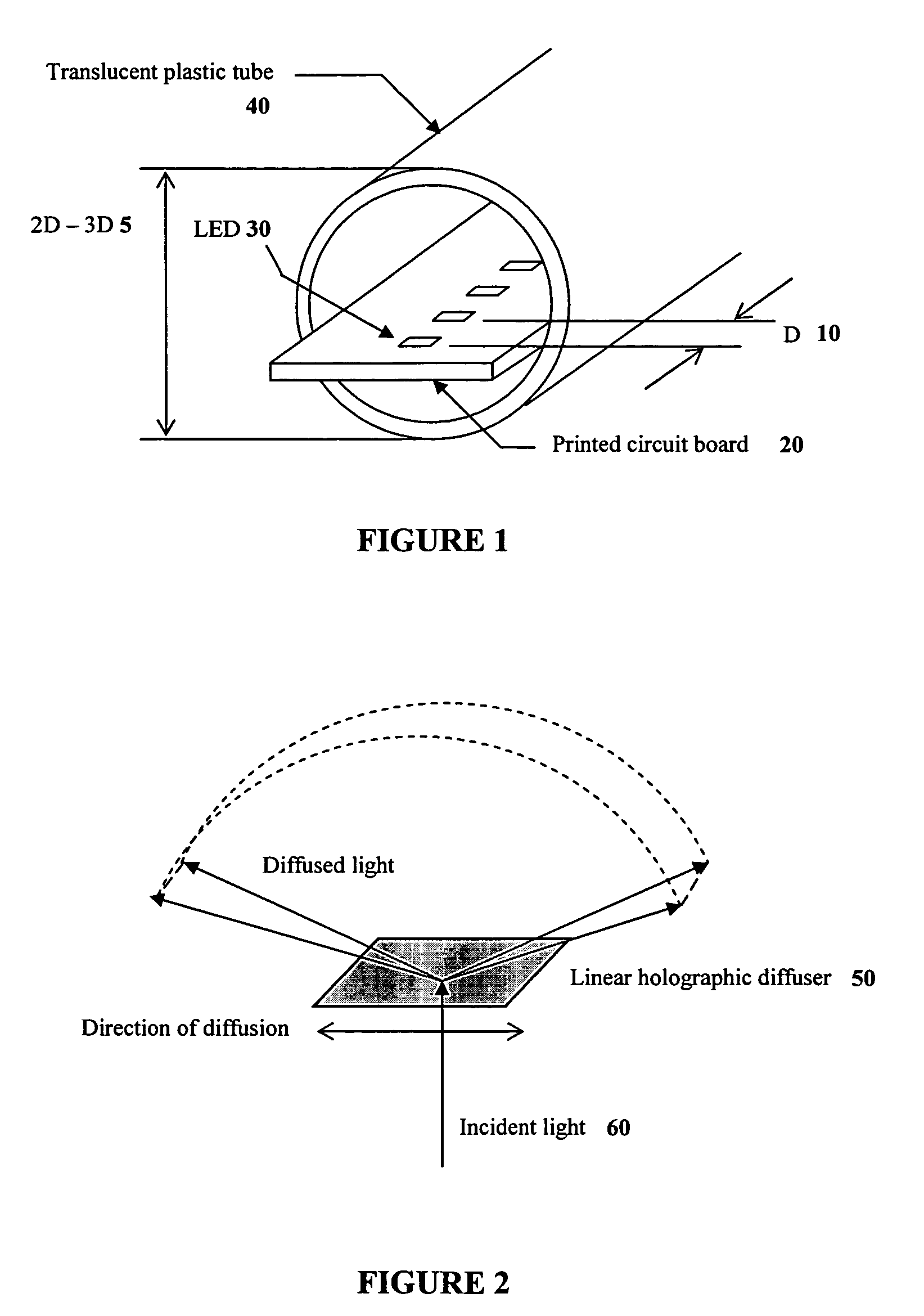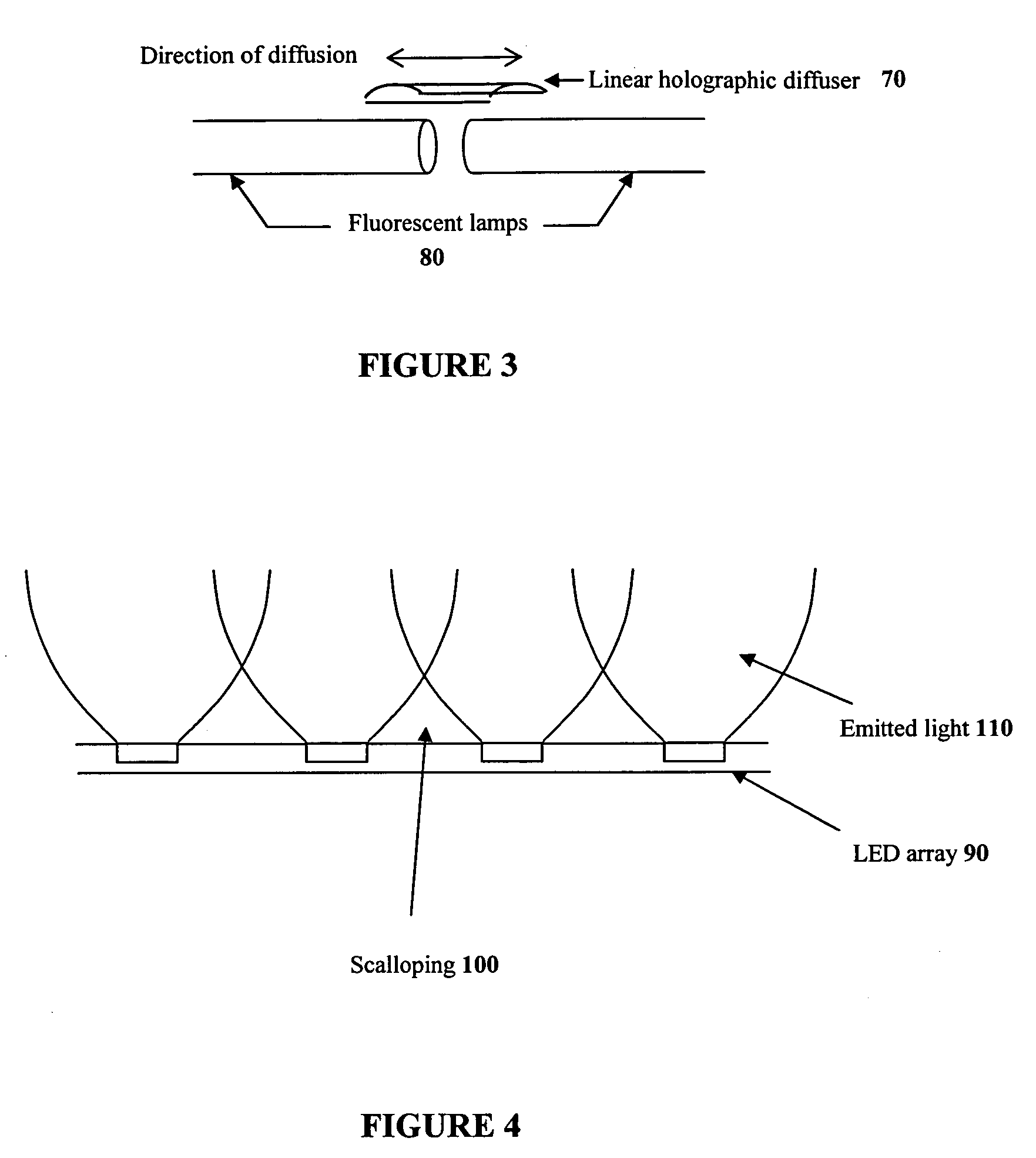System and method for the diffusion of illumination produced by discrete light sources
a discrete light source and diffusion technology, applied in the field of lighting, can solve the problems of unfavorable illumination hot spots perception, uneven luminance distribution, and limited illumination, and achieve the effect of reducing the size of the plastic tubing to a minimum of approximately 20 mm, and reducing the visual intrusion of the configuration
- Summary
- Abstract
- Description
- Claims
- Application Information
AI Technical Summary
Benefits of technology
Problems solved by technology
Method used
Image
Examples
Embodiment Construction
Definitions
[0036]The term “light-emitting element” is used to define any device that emits radiation in the visible region of the electromagnetic spectrum when a potential difference is applied across it or a current is passed through it, for example, a semiconductor or organic light-emitting diode (LED) or other similar devices as would be readily understood, and may include any electronic circuit drivers that may be needed to control its activation. It would be readily understood by a worker skilled in the art, that a light-emitting element can emit radiation in the visible region of the electromagnetic spectrum or any other region for example in the infrared or ultraviolet regions.
[0037]The term “diffuser” is used to define a device that scatters incident electromagnetic radiation, including visible light, infrared and ultraviolet radiation by means of diffuse transmission or reflection into a variety of luminance distribution patterns.
[0038]Unless defined otherwise, all technica...
PUM
 Login to View More
Login to View More Abstract
Description
Claims
Application Information
 Login to View More
Login to View More - R&D
- Intellectual Property
- Life Sciences
- Materials
- Tech Scout
- Unparalleled Data Quality
- Higher Quality Content
- 60% Fewer Hallucinations
Browse by: Latest US Patents, China's latest patents, Technical Efficacy Thesaurus, Application Domain, Technology Topic, Popular Technical Reports.
© 2025 PatSnap. All rights reserved.Legal|Privacy policy|Modern Slavery Act Transparency Statement|Sitemap|About US| Contact US: help@patsnap.com



